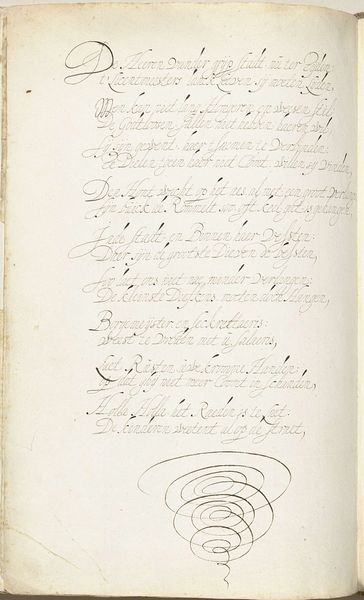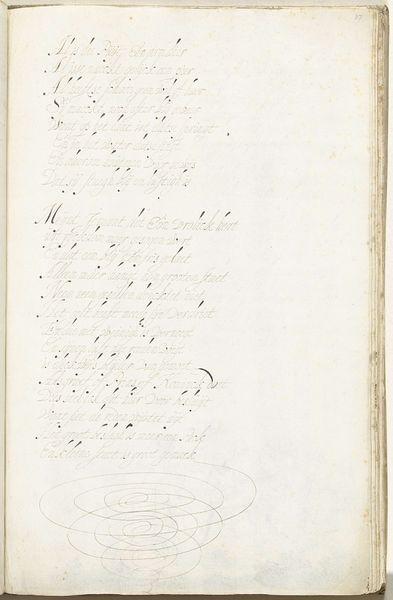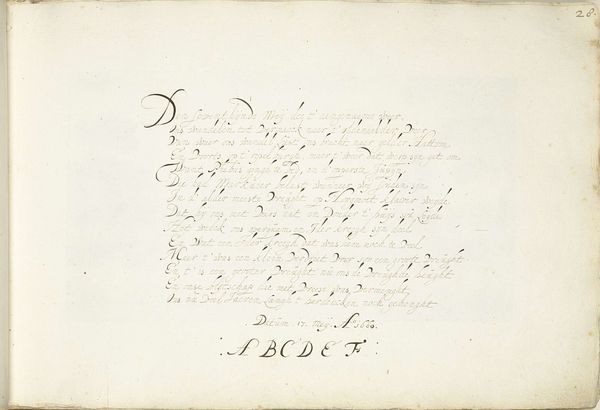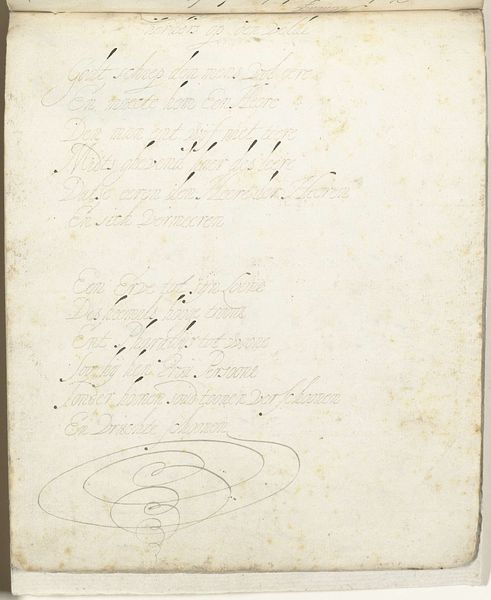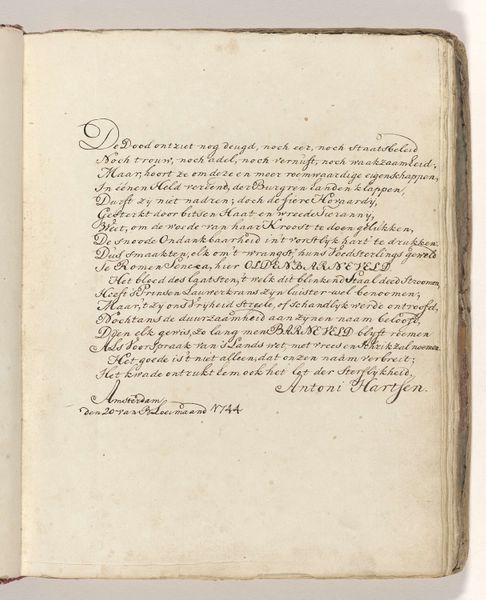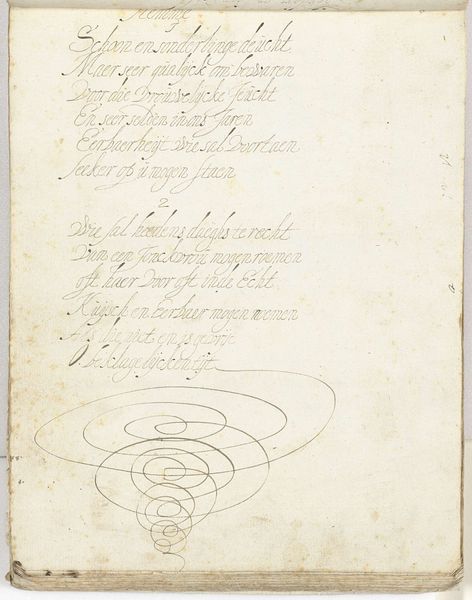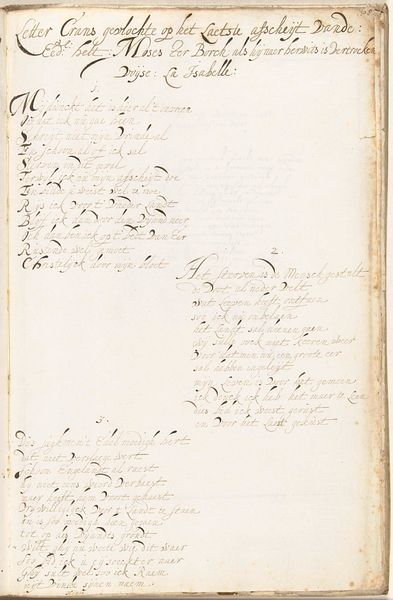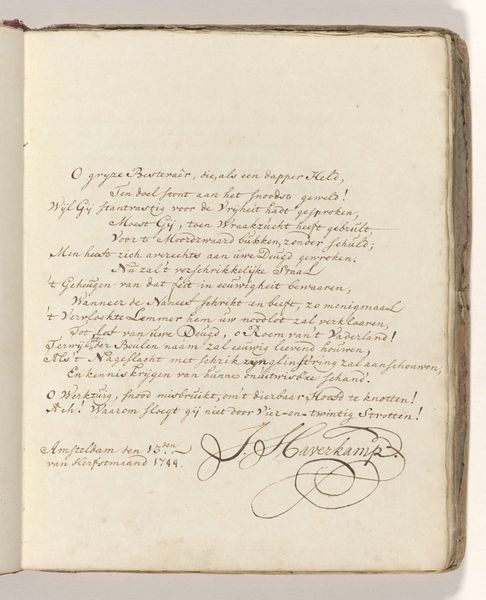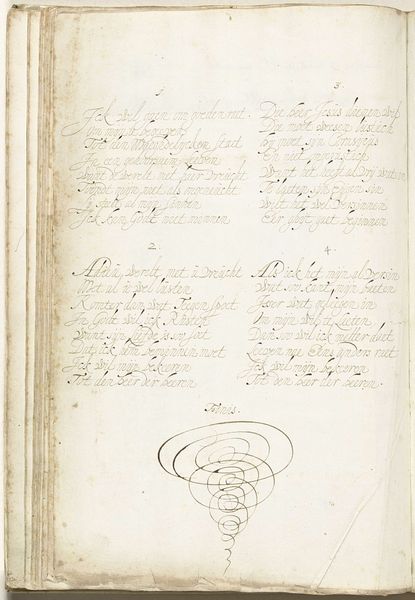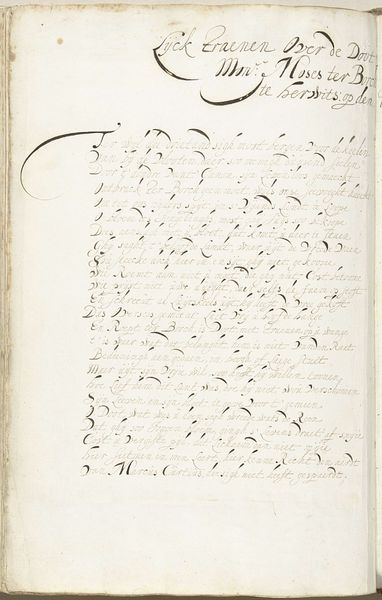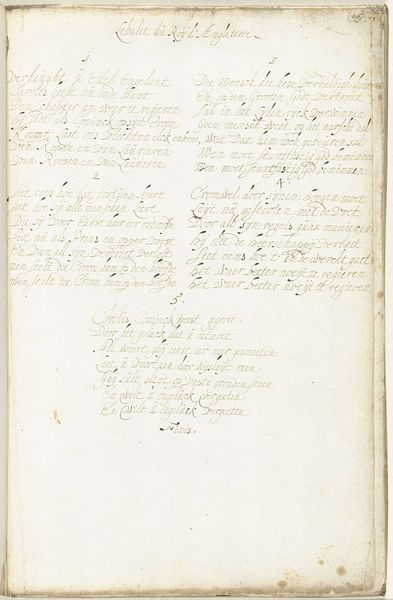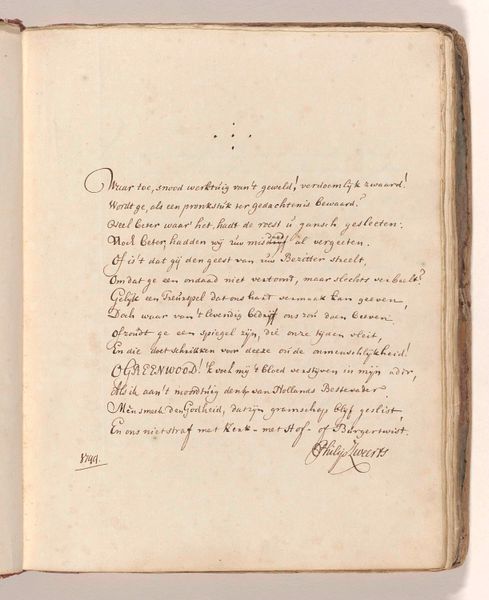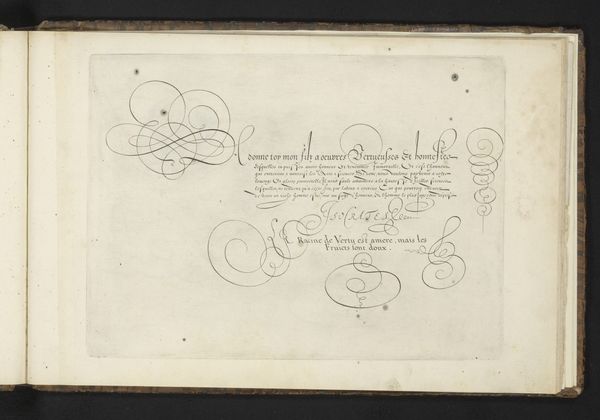
Gedicht over Gods toorn die corrupte ambtenaren zal treffen c. 1661 - 1665
0:00
0:00
gesinaterborch
Rijksmuseum
drawing, paper, ink
#
portrait
#
drawing
#
dutch-golden-age
#
paper
#
ink
#
genre-painting
#
calligraphy
Dimensions: height 313 mm, width 204 mm
Copyright: Rijks Museum: Open Domain
Curator: This intriguing sheet, dating from around 1661 to 1665, comes from the hand of Gesina ter Borch. It’s held here in the Rijksmuseum collection, and it’s titled "Gedicht over Gods toorn die corrupte ambtenaren zal treffen," or "Poem about God's wrath that will strike corrupt officials." The materials are relatively simple: pen and ink on paper. Editor: My initial impression is of intense precision. Look at this fine calligraphy! It's almost like a storm is brewing visually from the swirling forms at the bottom. You know, ink wasn't always easily available, its very production demanded careful material preparation. Curator: Precisely. The controlled flow of the ink mirrors the theme – divine wrath being meted out with careful intention. Considering Gesina ter Borch’s context is crucial. She was, unusually for the time, a well-regarded artist from a privileged background, which would affect her relationship to the means of artistic production and even something as common as paper. Editor: I’m fascinated by the artwork's societal commentary. The very act of creating and preserving this "poem" functions as an act of protest. Were corrupt officials of the era concerned with art? Did these statements serve some larger sociopolitical purpose within ter Borch’s elite circles? Curator: These broadsides certainly spoke to anxieties within Dutch society. One can imagine them circulating, discussed within households, possibly even influencing public sentiment, adding to the pressure for reform. It connects to labor as well: creating copies would be laborious without printing techniques, yet it ensured a wider reach than just the original artwork. Editor: It's a layered piece when considering all the implications. The form mimics authority but calls its supposed moral superiority into question. Ter Borch’s decision to use this artistic method becomes a powerful challenge to those structures. Curator: Indeed. The artwork provides insight into artistic practice, societal anxieties, and the materials available during that period, and it exemplifies ter Borch's craftsmanship. Editor: Ultimately, what started as lines on a page morphed into something echoing centuries later. It serves as a constant reflection of how artistic endeavors intersect within broader conversations concerning power dynamics.
Comments
No comments
Be the first to comment and join the conversation on the ultimate creative platform.
